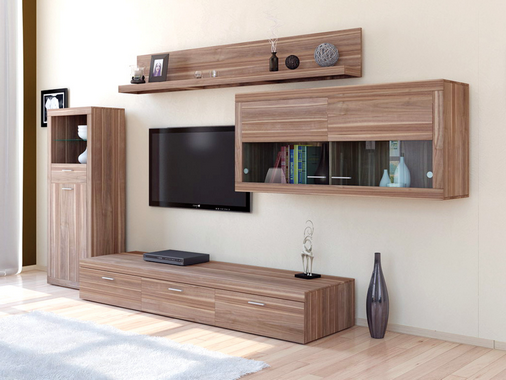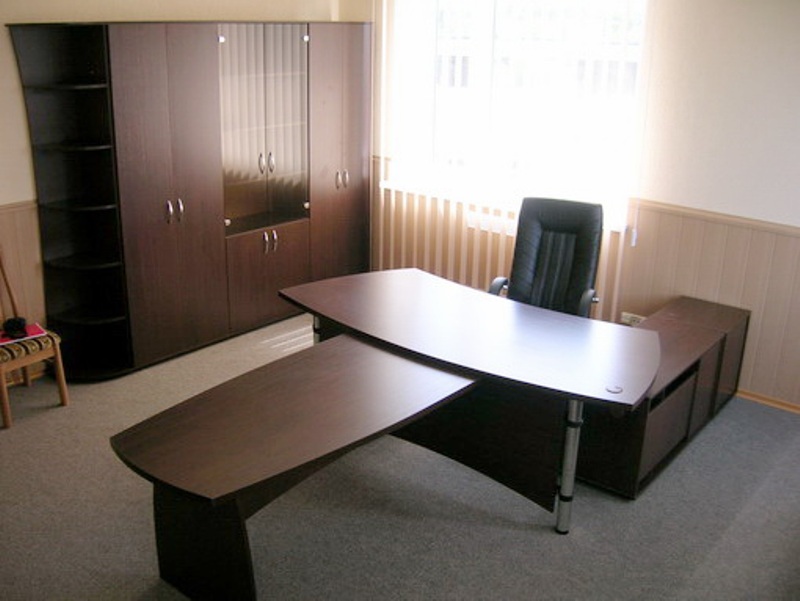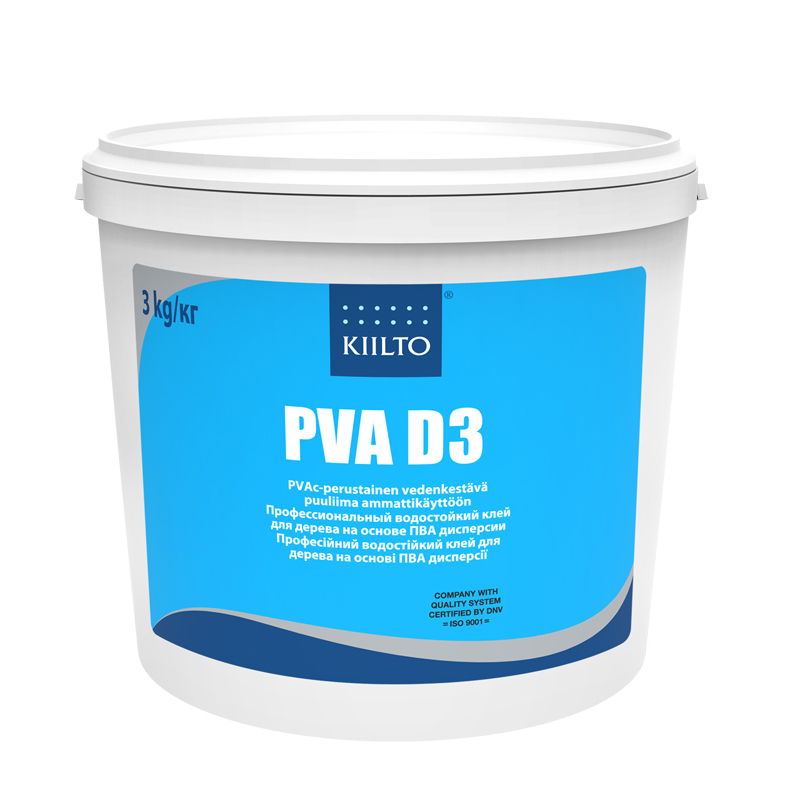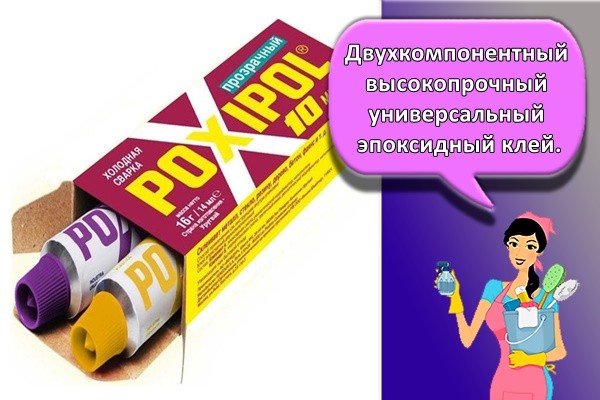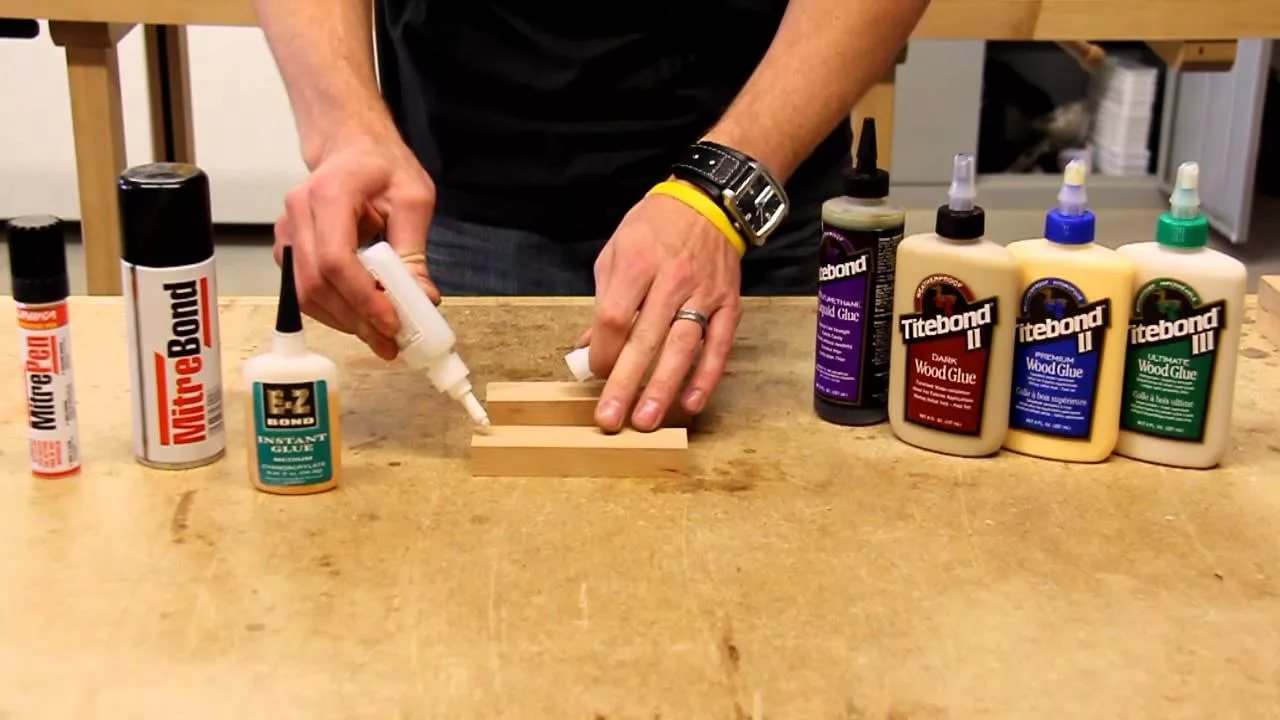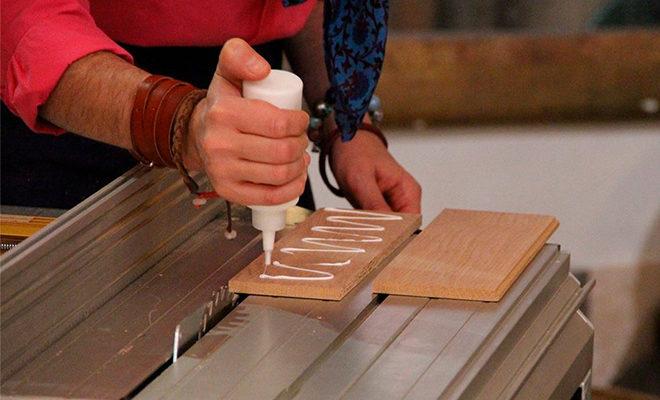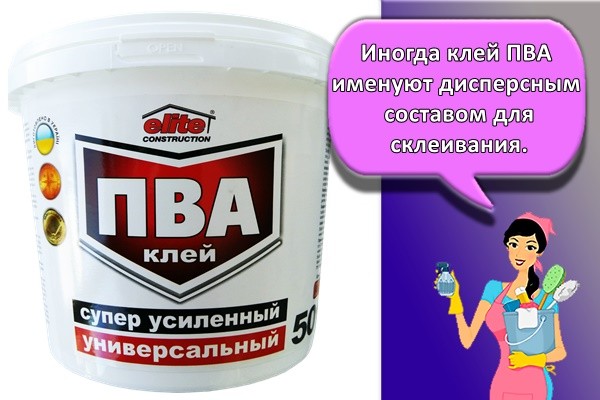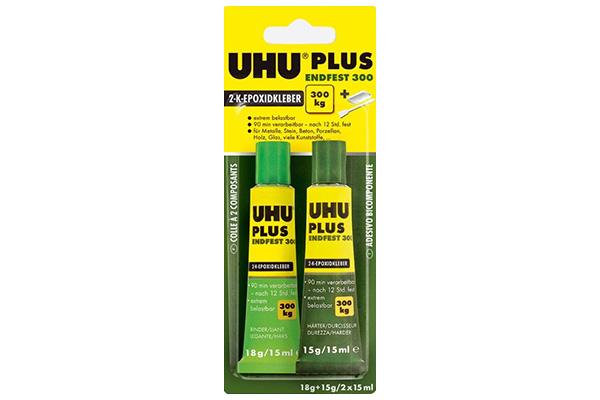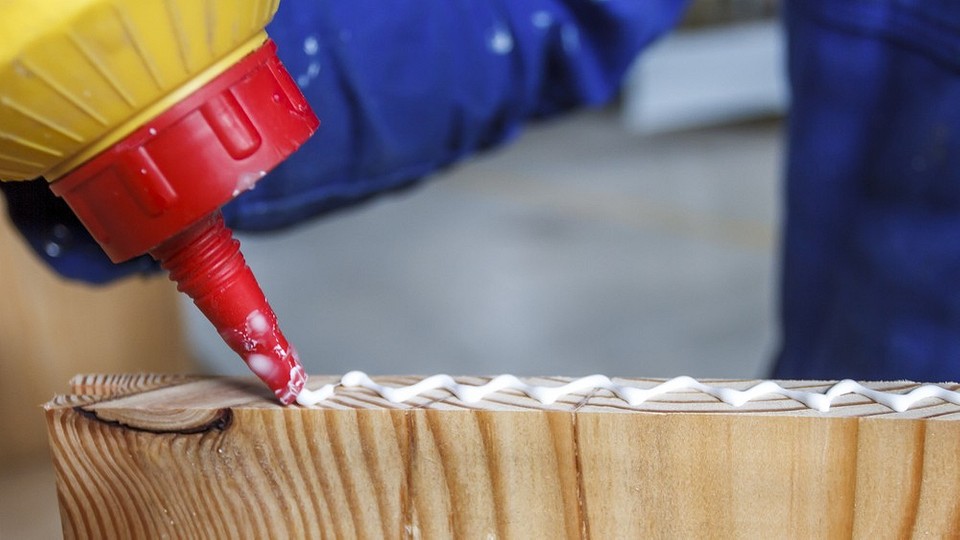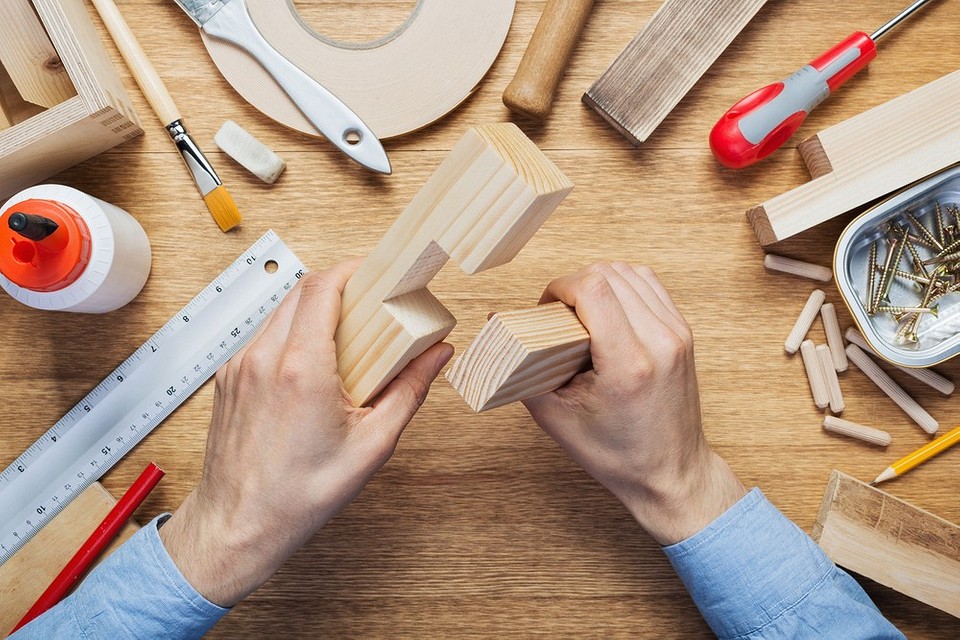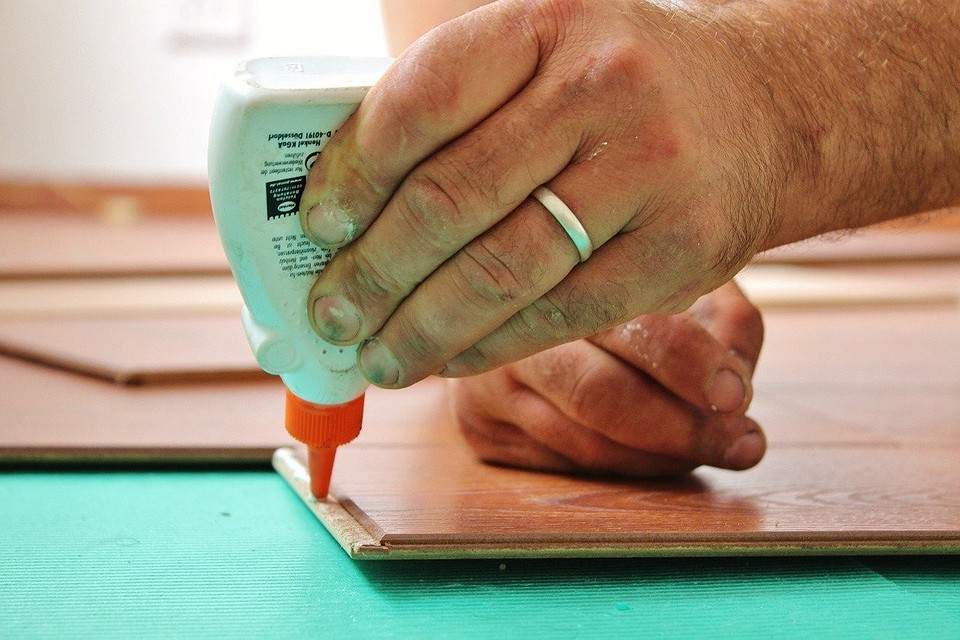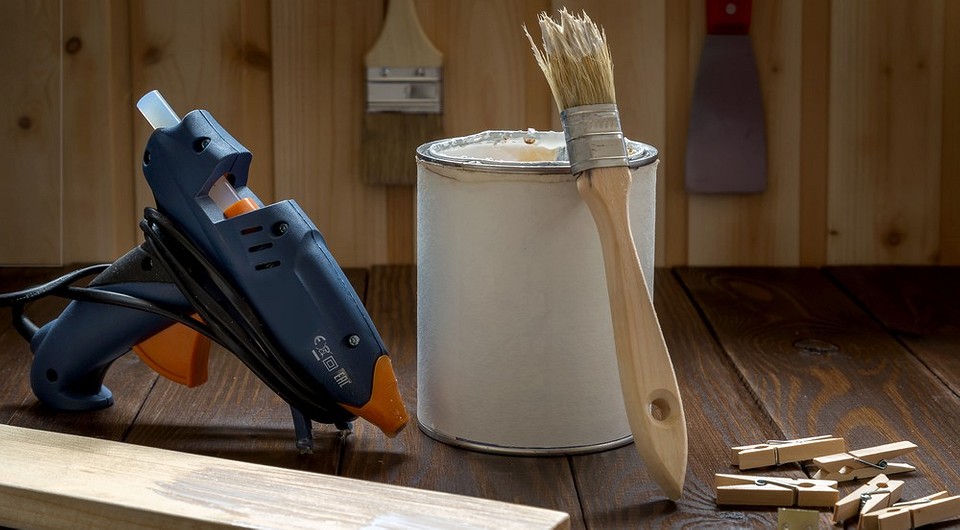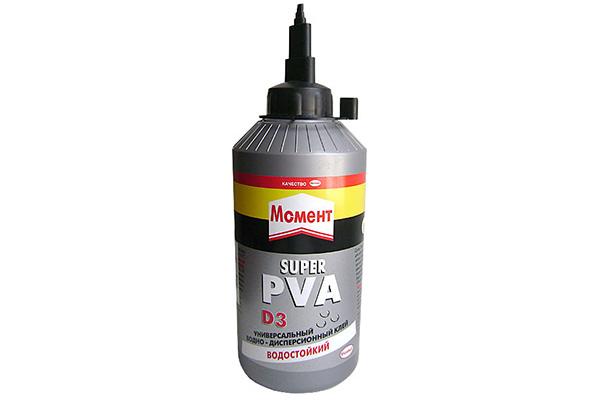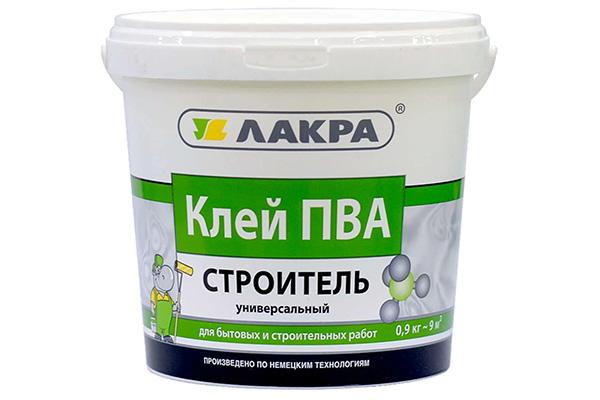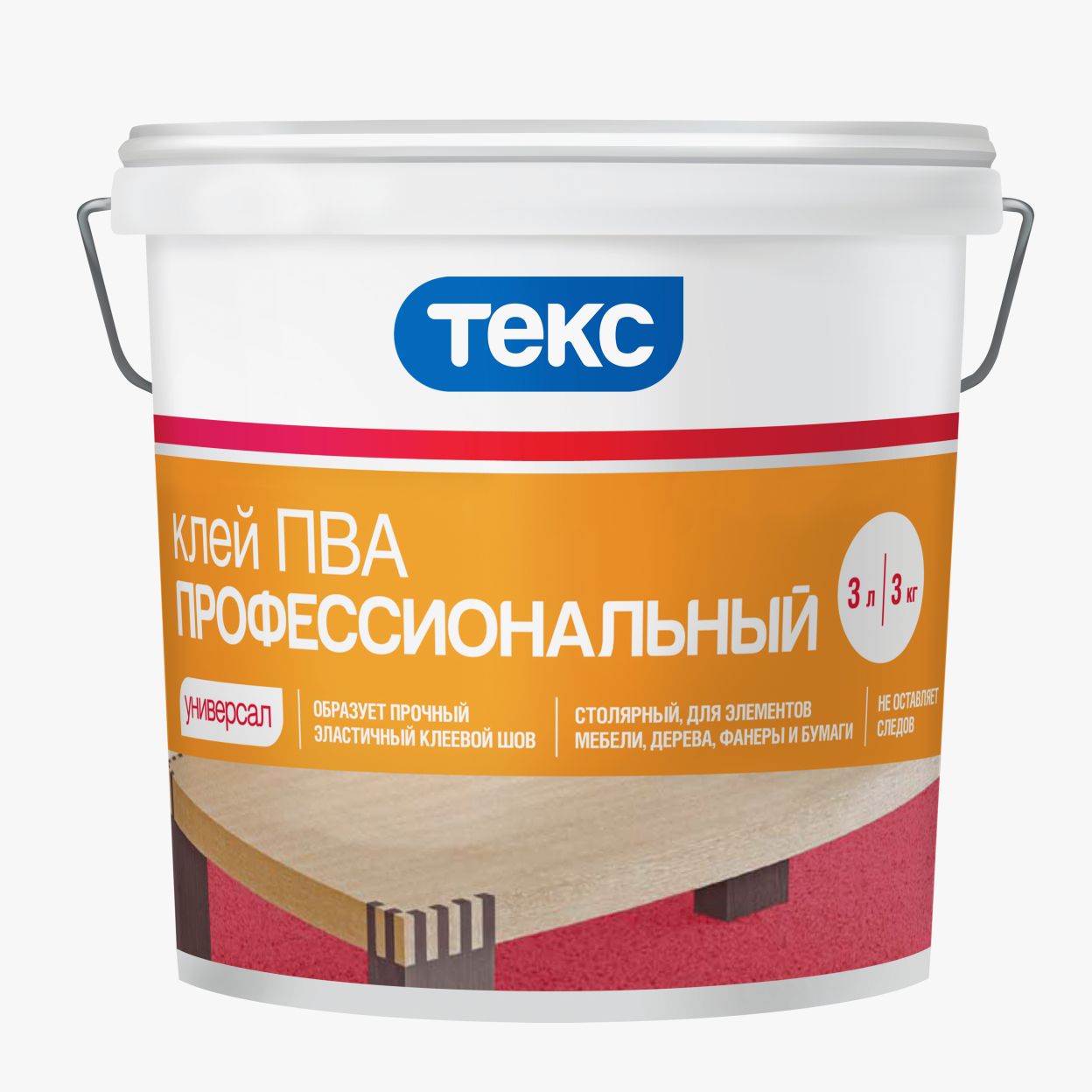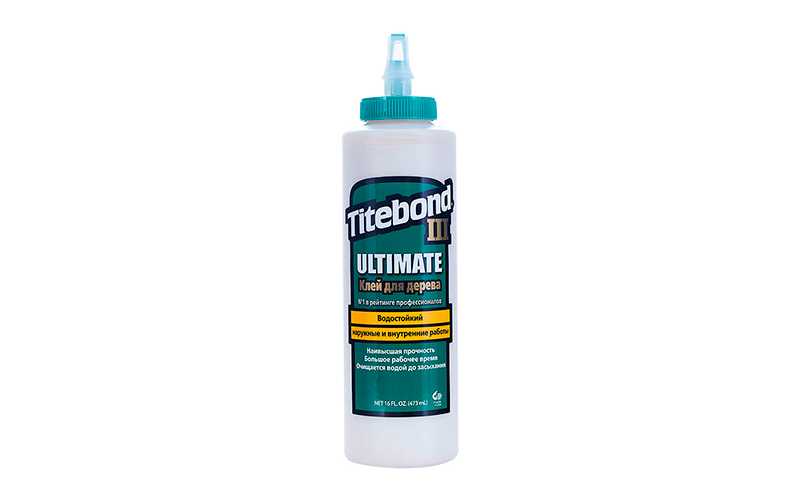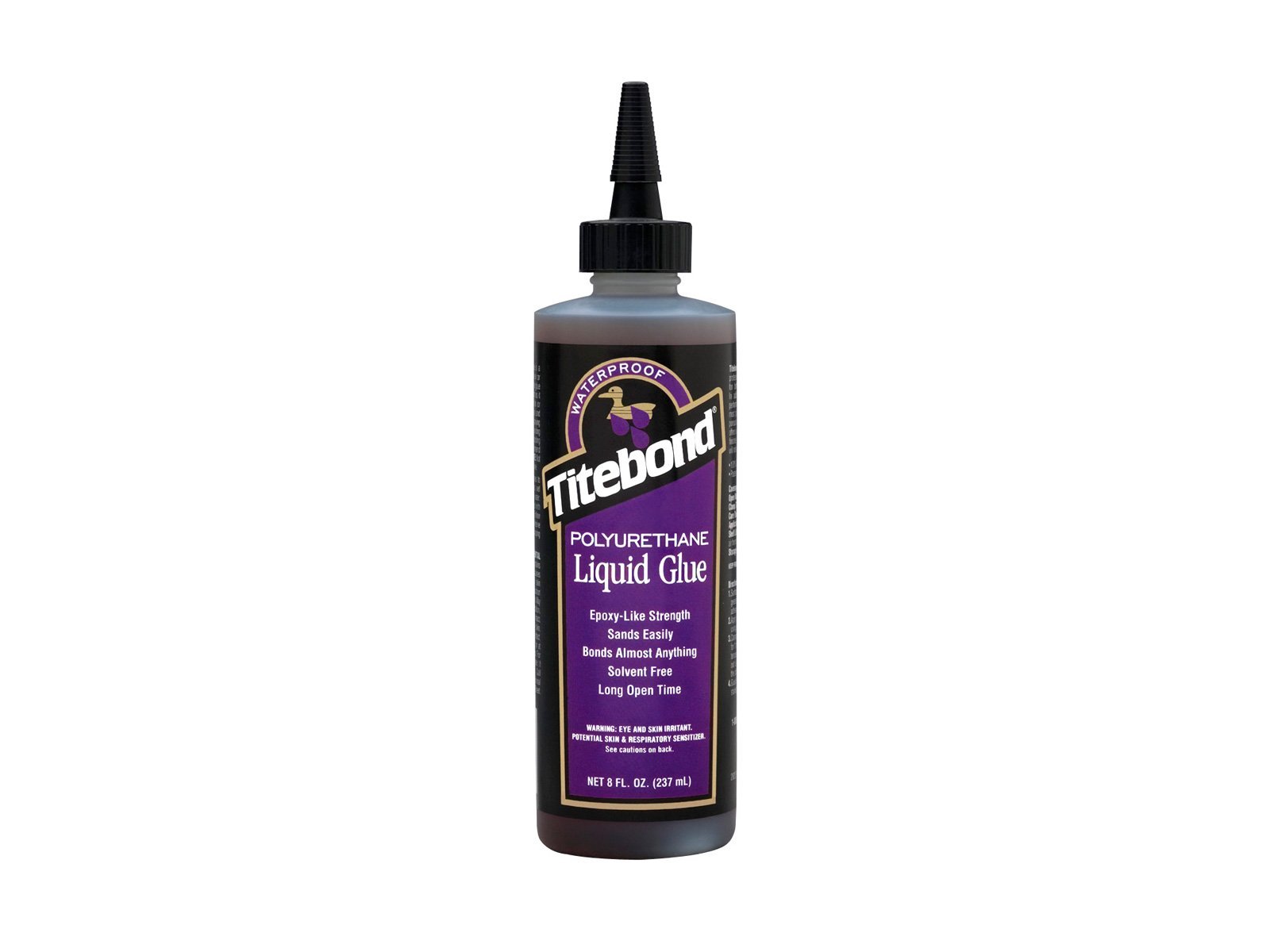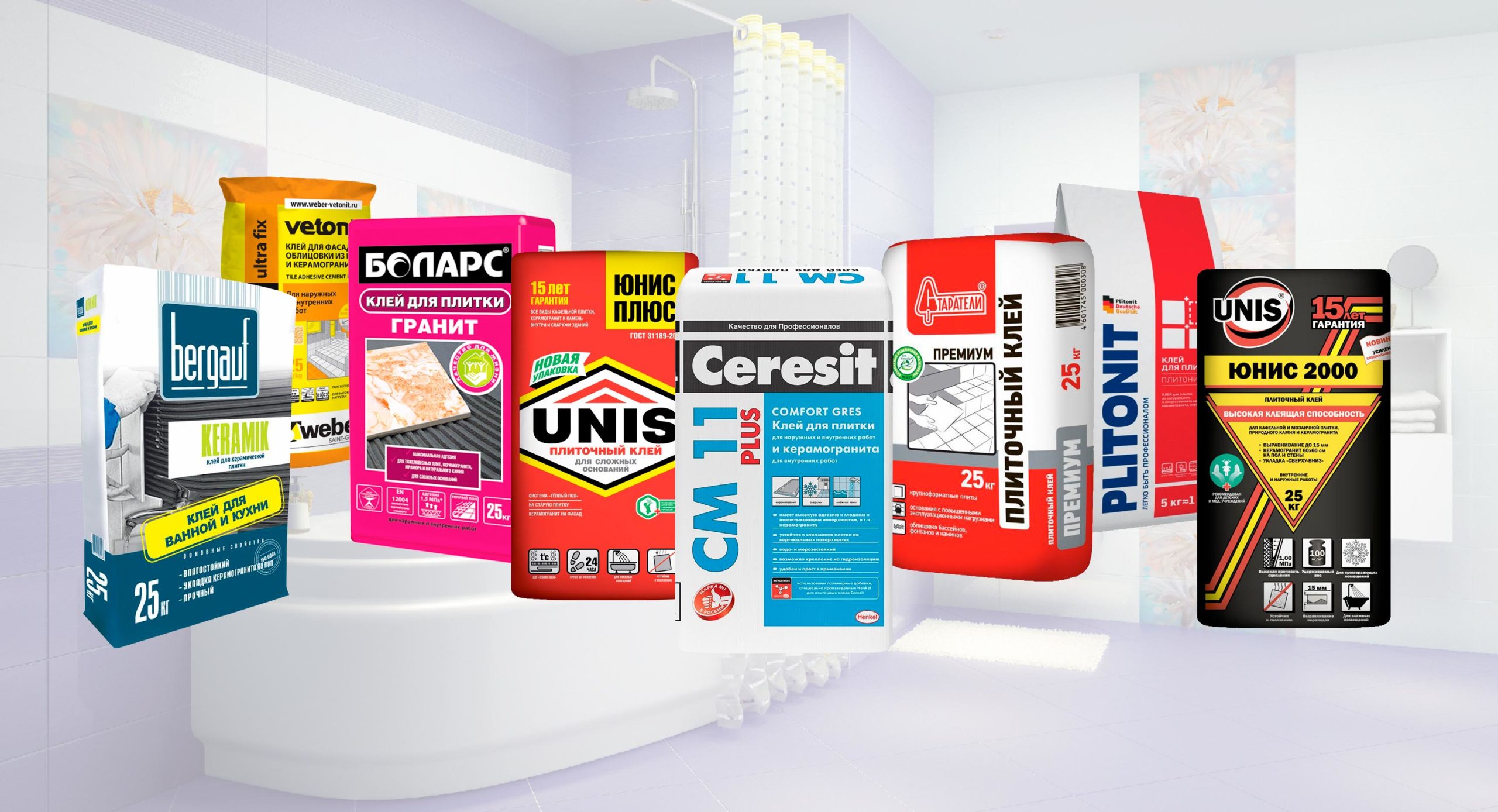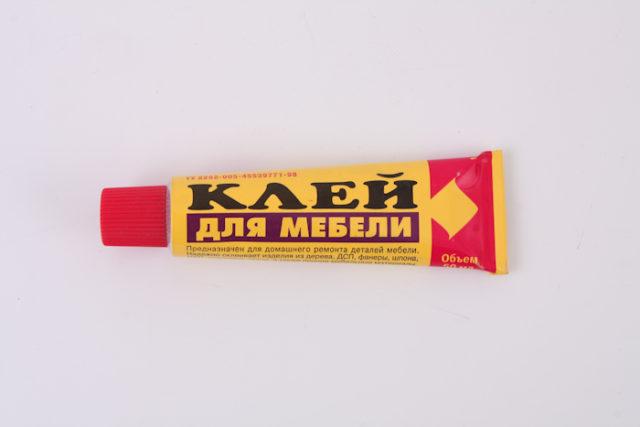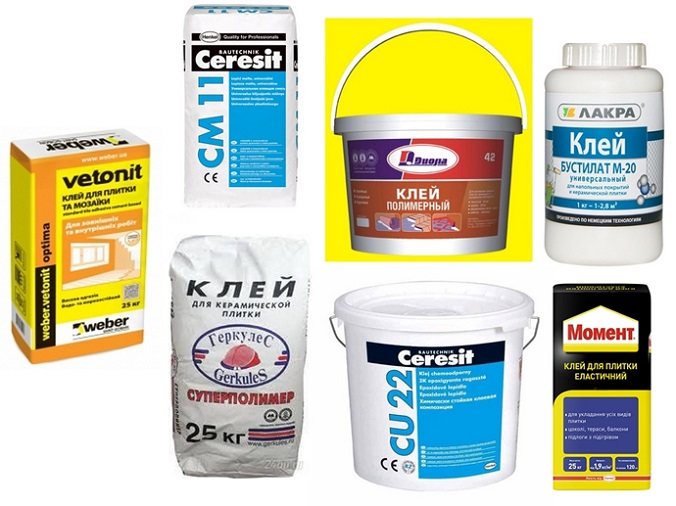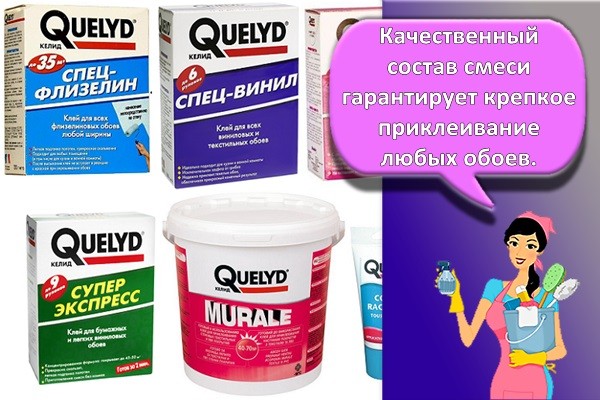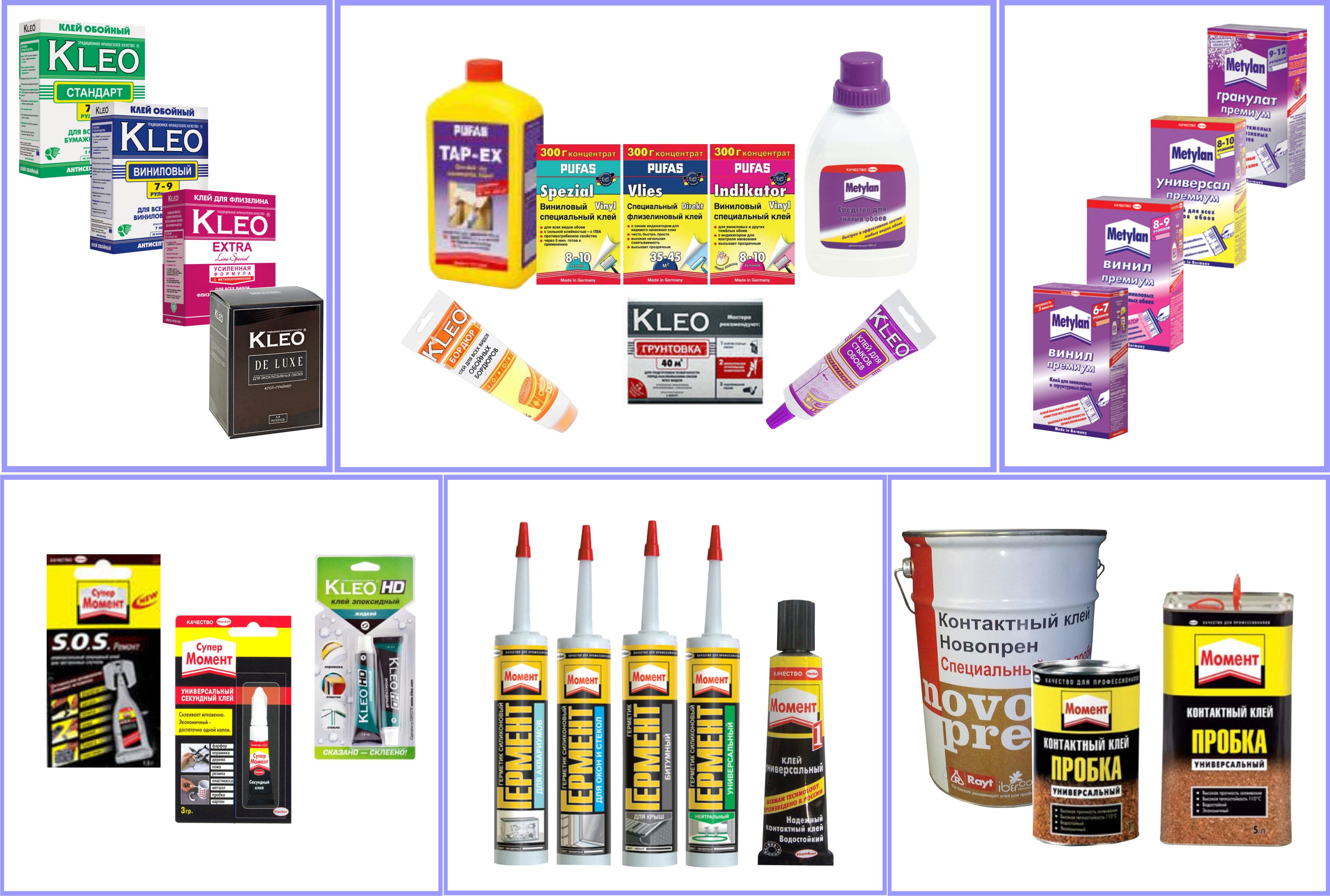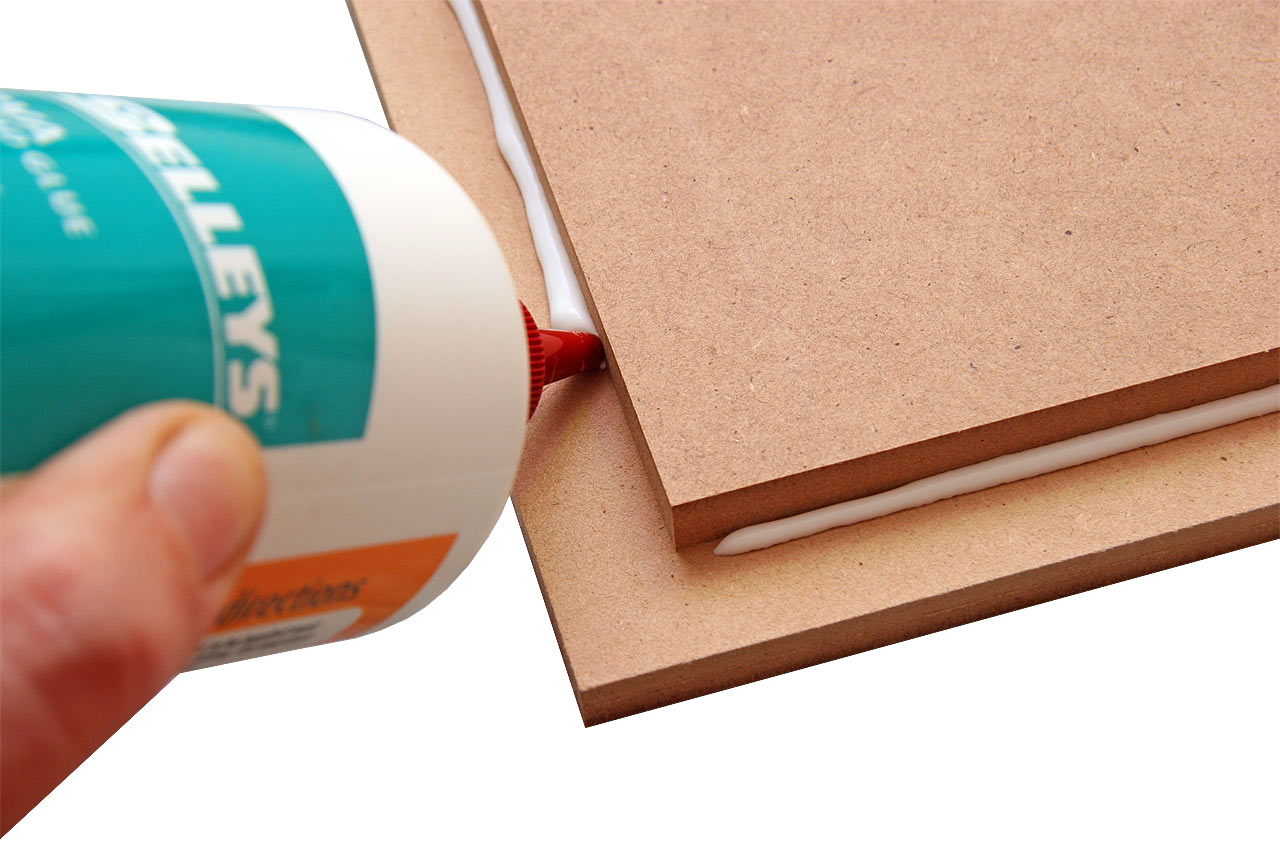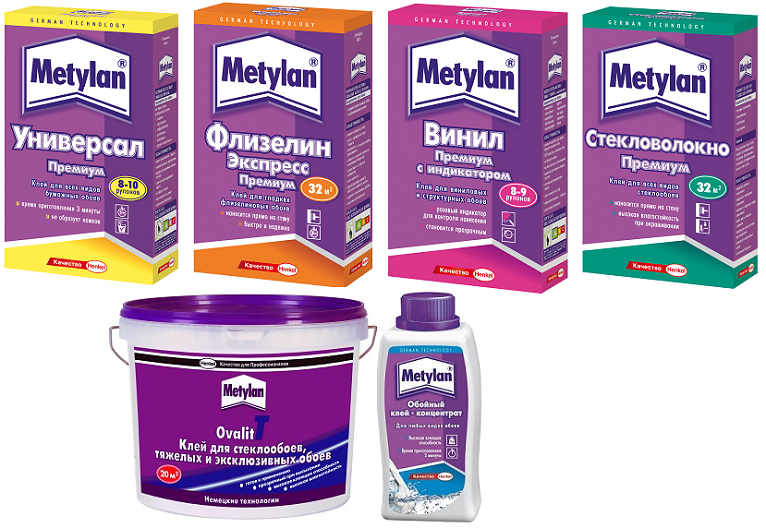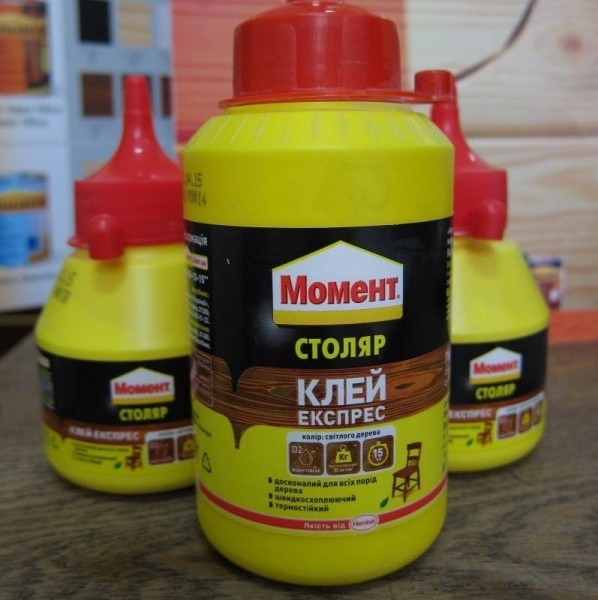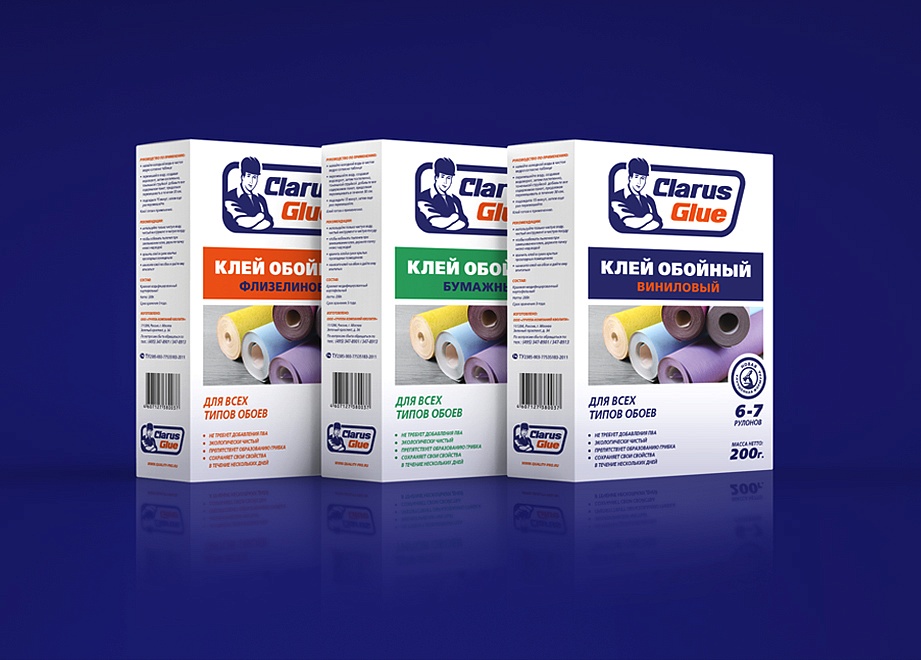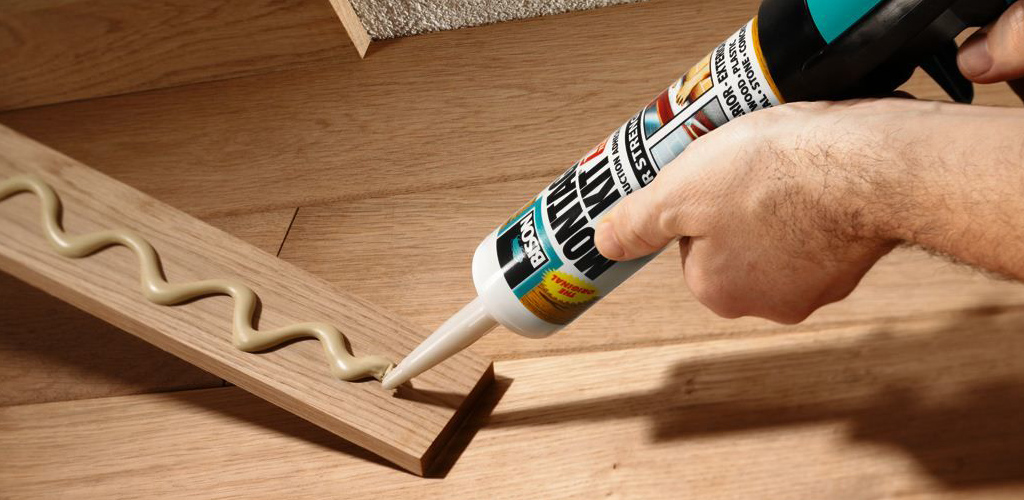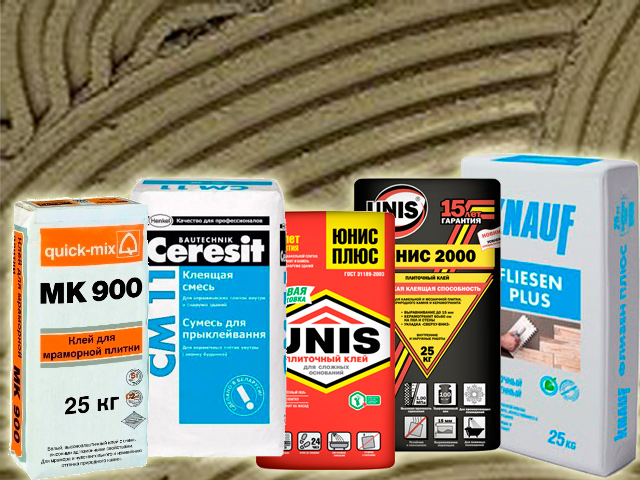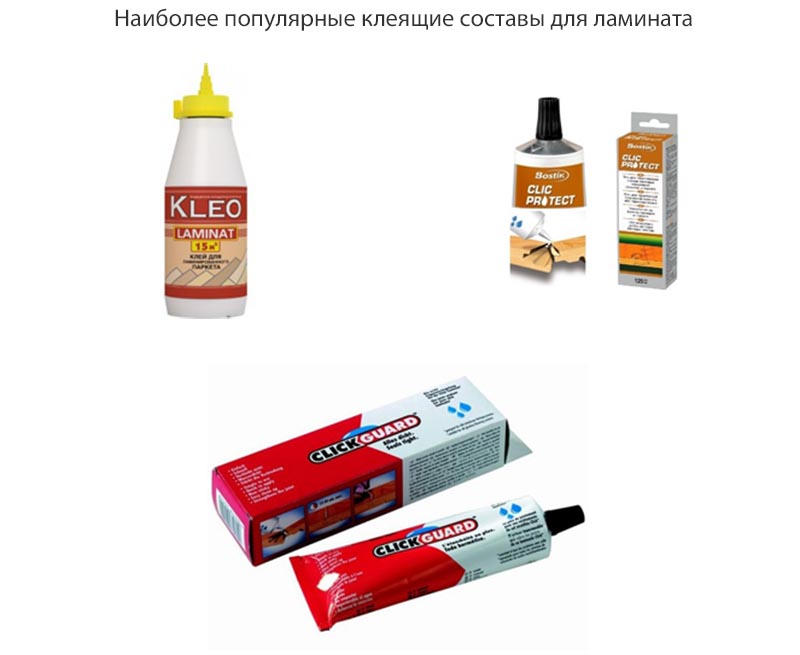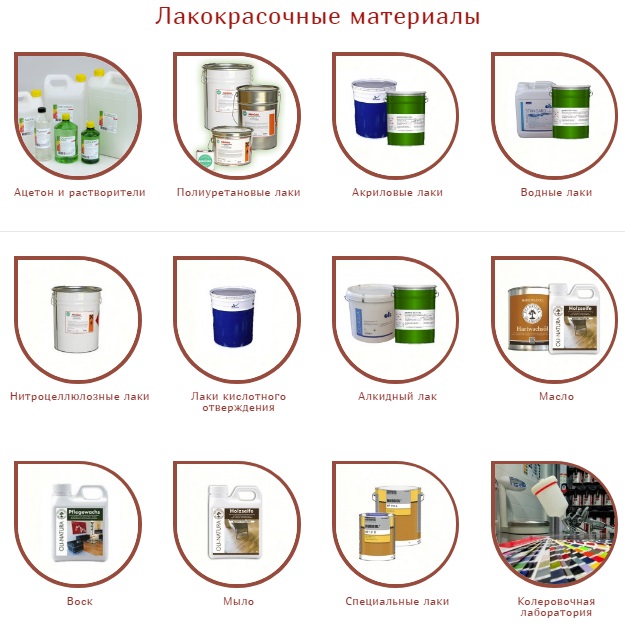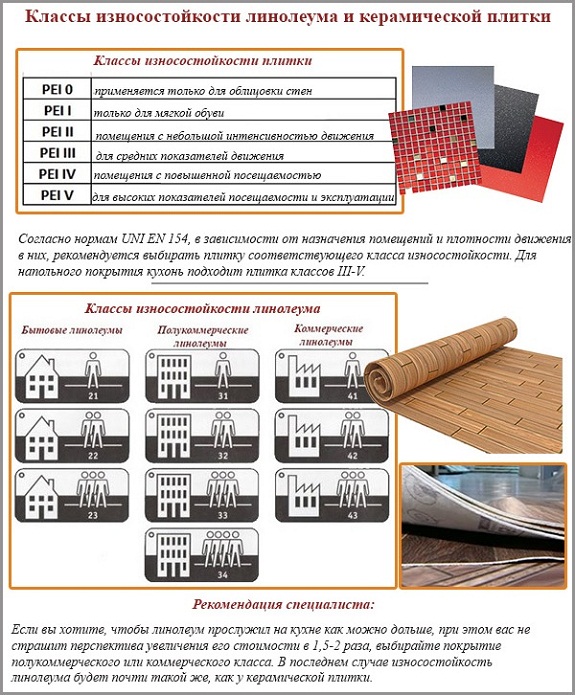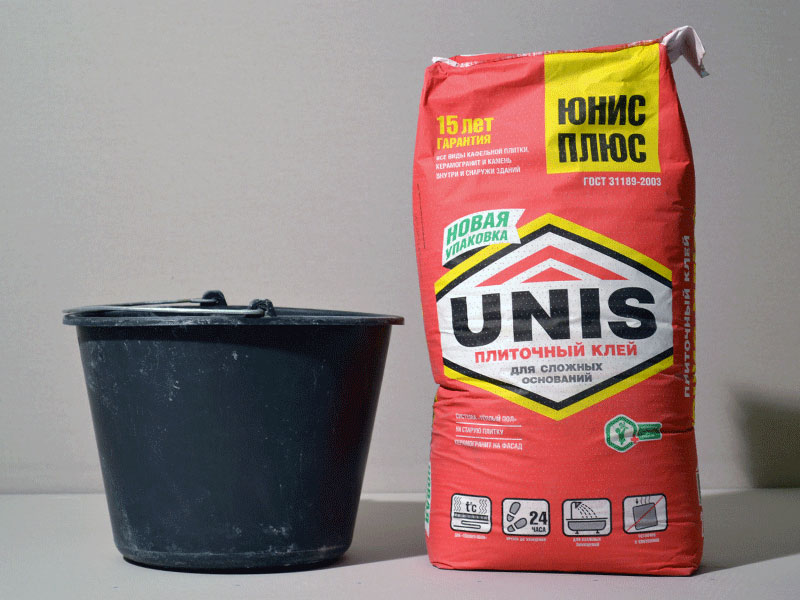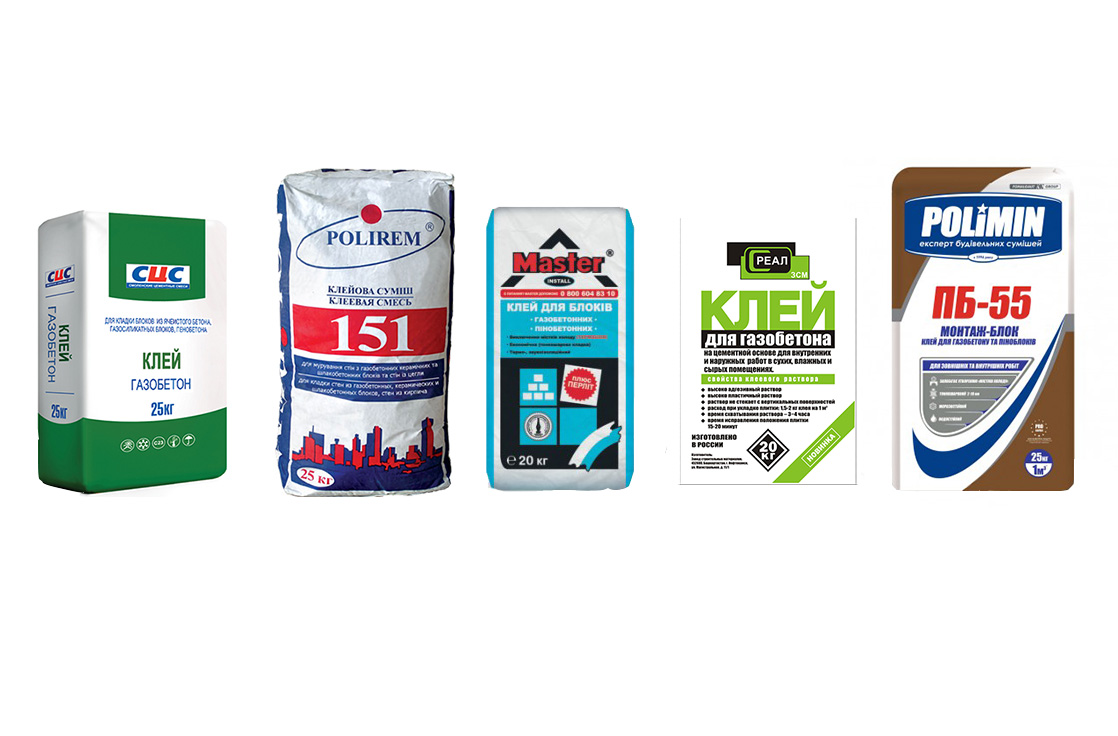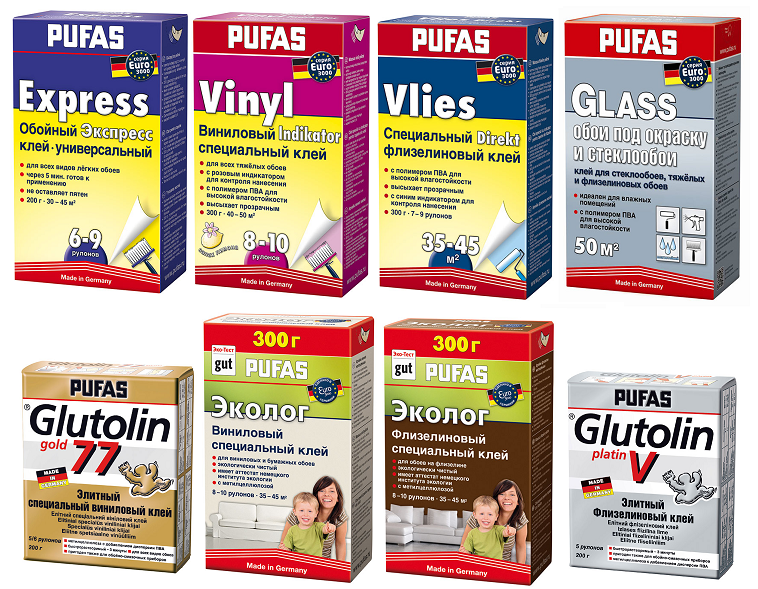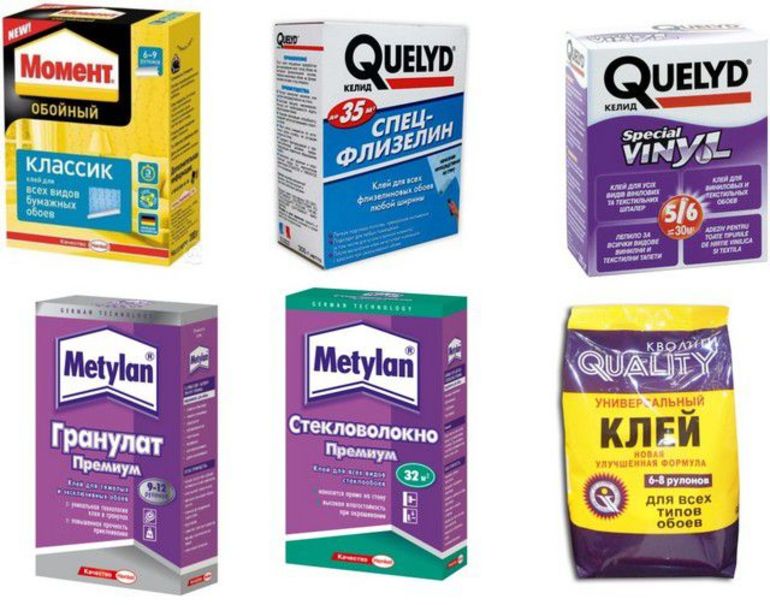Briefly about the different types of wood adhesives
| Glue type | pros | Minuses |
|---|---|---|
| PVA | adequate cost; | low strength; |
| does not harm the environment; | ||
| versatility of application; | can be destroyed by moisture and / or high temperature (from + 60 ° C and above). | |
| availability. | ||
| Polyurethane | withstands dynamic loads and UV rays; | relatively high price; |
| polyurethane adhesive is inert with respect to temperature changes; | most polyurethane adhesives have a rather pungent odor. | |
| high resistance to moisture. | ||
| Epoxy | high bond strength; | when working with with this type of glue, the user will need to protect the skin in order to avoid health problems; |
| universal use; | rather high consumption of adhesive material; | |
| withstands negative effects like water and aggressive compounds; | the need for very precise mixing of the components to obtain the right amount of glue. | |
| affordable price. |
Each type of glue has its own pros and cons, which you should know about when choosing a specific composition
The best polyurethane adhesives for wood
If the adhesive composition requires increased reliability, long-term resistance to mechanical stress, resistance to moisture and negative climatic conditions, then it is advisable to use a polyurethane composition. When comparing 7 products, it was found which is better. The list contains 3 of them.
Akfix PA370 D4
Akfix PA370 is a ready-to-use 1-component polyurethane product that can reliably connect wood-based objects with metal, concrete, plastic in the shortest possible time. Effective for repair work in wooden floating equipment, due to its imperviousness to moisture and external factors. It must be remembered that when solidified, the product will slightly increase in size, increasing the quality of the joint.
Polyurethane glue for wood has proved to be excellent in joinery, in the manufacture of furniture frames, doors, joining multilayer elements in complex structures. To get the maximum strong connection, the temperature indicators of the external environment cannot be less than +5 degrees, and the elements to be glued are somewhat moistened. Dry fragments of the product can be easily removed with acetone. The maximum temperature indicators at which the seam will not lose its qualities are in the range of -40 + 100 degrees.
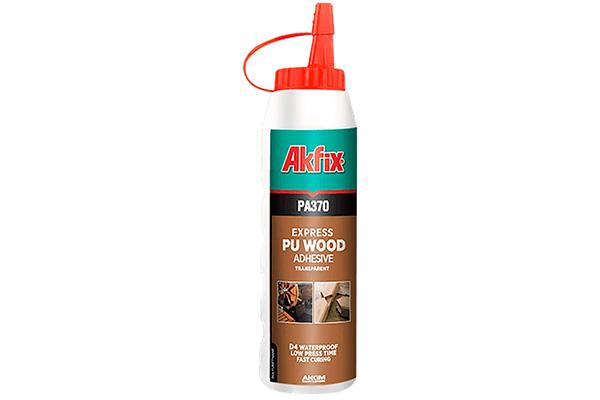
Advantages:
- Convenient use;
- Low viscosity;
- Reliable gripping;
- Fast drying;
- Immunity to moisture;
- Heat resistance.
Disadvantages:
Flammability.
Based on the feedback, the tool will allow you to create reliable connections. Users note that the temperature range makes it possible to glue any material that is of wood origin.
Titebond Polyurethane Wood Glue 2300
The best wood glue made of polyurethane for wood, which is a breakthrough in the field of adhesive technology. The composition in question from a trademark from the United States occupies one of the leading places in this segment. The developer was able to strike a balance between the speed of hardening (45 minutes) and the time to maintain its qualities (20 minutes).
The product adheres firmly to all wood-based materials, from regular wood to wood shavings. The area of use is not limited to this: metal, plastic, stone and other materials are firmly glued. Differs in moisture resistance, however, in conditions of excessive humidity or under water, the resulting nodes cannot be left. The glue is not afraid of the cold, however, before use, it must be thoroughly warmed up to +12 degrees.
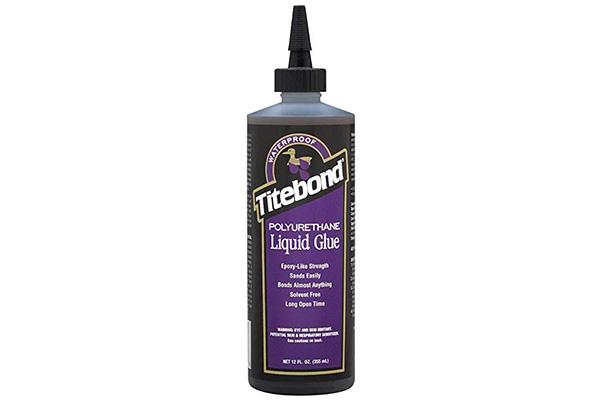
Advantages:
- Fast setting;
- Versatility of operation;
- High bond strength;
- Resistant to moisture;
- Environmental friendliness of the material.
Disadvantages:
It is used only at +10 degrees.
Users note that the product is suitable for humid rooms, specific, does not dissolve in water. Not used for products that come into contact with food. Foams well, which is why it fills the space between the parts. Adheres wood to brick firmly.
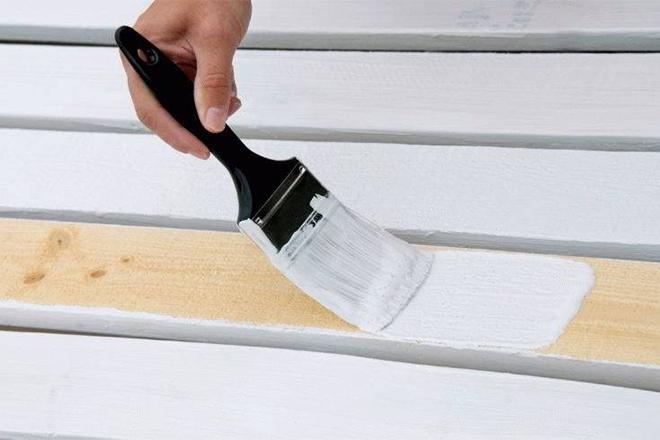
The best paints for wood
PUR glue Kleiberit 501.0, D4
One of the best universal adhesives is considered to be products from the German brand Kleiberit 501.0. The basis of the product is polyurethane, which makes the material resistant to moisture and resistance to temperature extremes. The 1-component composition is easy to use, it is permissible to use it to connect 2 elements made of wood, as well as other combinations, for example, polyvinyl chloride, miniplates, ceramics, concrete, etc.
The operation of the formed nodes is possible indoors and outdoors, in the rain or scorching heat. Excellent adhesion quality is confirmed by international standards. The compound is completely cured after 24 hours.
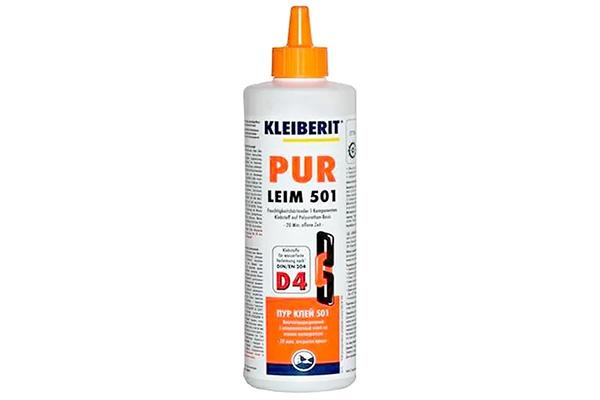
Advantages:
- Ease of operation;
- Short hardening time;
- Elasticity;
- Versatility of application;
- Resistance to aggressive environments;
- Resistant to temperature changes.
Disadvantages:
- Long-term drying;
- Corrosive aroma.
In the reviews of domestic buyers, mainly positive characteristics are noted. This composition is convenient to use, it will not drain, the seam will turn out to be reliable. However, it is difficult to wash your hands after work; in the process of gluing, it is necessary to ventilate the room.
Additional tips and tricks
The advice of professionals will help to facilitate the work:
- Trimming off excess melamine edging may leave a light edge along the part. You can paint it over and color it with the base with wood stain.
- To work with any edging materials, use short, very sharp knives (cutters).
- Before starting work, the sole of the iron is cleaned of carbon deposits and dirt. The temperature is set empirically by checking the melting of the adhesive layer on a small piece of tape (not on furniture).
- Wear gloves when working with heating devices (iron, hair dryer) - you can burn yourself with hot glue.
- When trimming PVC edges (2 mm or more), it is better to use a router.
- It is necessary to cover with an edge (you can choose the cheapest melamine material) all open cuts of the boards are necessary.
Grinding the glued part improves the appearance, eliminates small burrs. You can use a block to which the sanding paper is attached.
> Self-edging saves money when ordering furniture. The work does not belong to the category of difficult, even inexperienced craftsmen can do it. The edge on all the cuts is glued immediately after the furniture is assembled, without waiting for the edges of the chipboard to begin to wrinkle and crumble. Inexpensive materials will protect against moisture and fungus, extend the life of things.
Share link:
Record-breaking strength Loctite
The Guinness Book of Records has information about Loctite glue. It is considered the most powerful adhesive. The test took only 9 drops. A passenger car was placed in the back of the pickup and attached with Loctite. Both cars were lifted into the air. This superglue held 5 tons.
The record-breaking brand belongs to the German company Henkel. The strongest glue is used to bond various surfaces, bushings, flanges, etc. It is used by European car manufacturers. The anaerobic composition hardens in the absence of air and is resistant to lubricants.
Several groups of products are produced under the Loctite brand for different purposes.
General rules and principles of use
The strength of the connection between the tile and the stove surface depends on:
- cleaning surfaces from dust and dirt;
- alignment of existing defects;
- thorough mixing of the adhesive components;
- tight connection of surfaces after applying KS glue;
- waiting for the product to dry completely.
When laying stoves and fireplaces, the paste should be applied to both surfaces. After 3 hours, the parts will connect and fully attach after 72 hours. Usually 600-800 grams of glue are spent on 1 square meter of surfaces. Installation of linoleum is carried out by first applying a thin layer, and after 10 minutes - a layer 10 millimeters thick. Smooth out the coating with a roller, removing excess funds.
If the cladding is made outside the house, then the air temperature for work is chosen at least 5 degrees Celsius. The adhesive should be applied correctly on the surface with a spatula. In this case, the thickness of the applied composition should be in the range of 4-8 millimeters. It is best to have an intermittent bead of adhesive on the tile. Then air jams will not form.
If the surface is made of mineral wool, then the surface should be primed with a thin layer of KS glue paste. During work and during the drying period of the glue, it is necessary that there is no exposure to direct sunlight, precipitation.
When working with KS glue, you should not forget about protecting your hands. The alkali in the paste can corrode the skin if it gets on it. If the substance has damaged the skin or mucous membranes, wash your hands under running water and soap. It is advised to wear a working coat, gloves, glasses before repairing. Dangerous if glue gets in your eyes. Here you need to quickly react and rinse the mucous membranes of the eyes with clean water.
Types of material
With a similar manufacturing process, the use of different grades of wood chips, polymer binders and coatings can produce material with significant differences in properties.
Therefore, it is important to know what categories the chipboard is divided into and what properties can be expected from each
According to the totality of quality characteristics, laminated chipboard slabs are divided into two categories: PA (higher quality) and PB (lower quality). Slab PA is less deformed and swells from water, better withstands destruction during deformation by bending or stretching. The surface of the PA slabs is less rough. However, the PB plate is cheaper, therefore, in many cases, its use is more economically justified.
Formaldehyde resins used in the production of laminated chipboard are also
differ in quality. The main characteristic of their quality is the emission class.
This class shows the environmental friendliness of the material, its tendency to release
volatile toxic substances. Chipboard with emission class E1 is considered to be of higher quality. It can be used to make furniture. Class E2 is more prone to the release of toxic substances, so its use is more limited.
Furniture made of chipboard or laminated chipboard is not recommended for children's rooms. In them, it is possible to use only plates of class E0, which are not produced in our country.
In Russia there is no ban on the use of plates of class E2 and E3 for
the manufacture of furniture or decoration of living quarters. However, they cannot be used for children's rooms, hospital wards, classrooms. In European countries, the use of plates with such an indicator of formaldehyde emission is prohibited in any residential area.
It is possible to determine the safety of the plate only when
studying the accompanying documentation (quality certificates). but
it is quite possible to estimate the quality by the presence of smell. With a sharp
the chemical smell emanating from the stoves, it is better to refuse to buy. Not worth it
hope that the smell will disappear by itself in a week or two.
What to look for when choosing a tool
A convenient option is the ability to adjust the force. This addition allows you to select the required penetration force for bases of different densities.

The force is adjusted by a screw
With this device, it is possible to achieve flush driving of the staple with the surface, without excessive immersion of the consumable in the base and without raising it above the structure. This ensures maximum aesthetics of the fastening. At the same time, the material to be fixed does not deteriorate either.
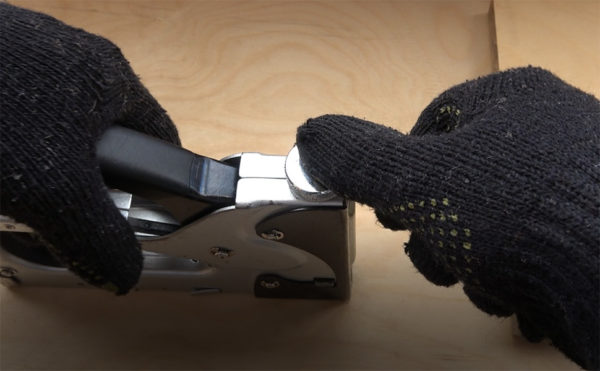
Before working, adjust the adjusting screw according to the material of the surface to be worked on. If it is a loose surface, the force must be reduced to avoid tearing the fabric.
The rubberized handle makes your work more comfortable. A minor improvement helps to make the work of the foreman much easier.

Mechanical stapler with a comfortable handle
For storage or transportation of the tool, it is convenient to fold the handle (lever). The possibility of accidental shots is also excluded. Otherwise, it is recommended that you remove the staples from the stapler.
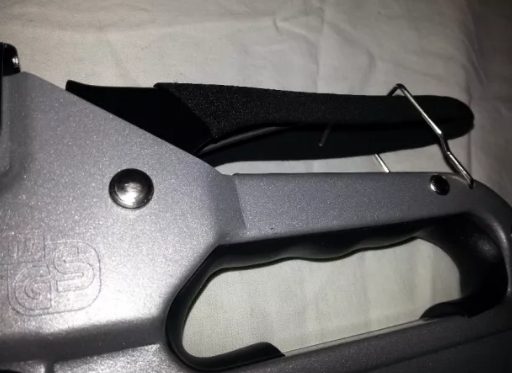
Fixing the handle
Sometimes, when working in a confined space, the reach of the lever relative to the body is important.
In certain situations, it is useful to be able to perform a second strike on an incompletely hammered bracket.
When purchasing an electric tool, you should pay attention to the length of the power cord (it should not be less than 5 m), as well as insulation from current
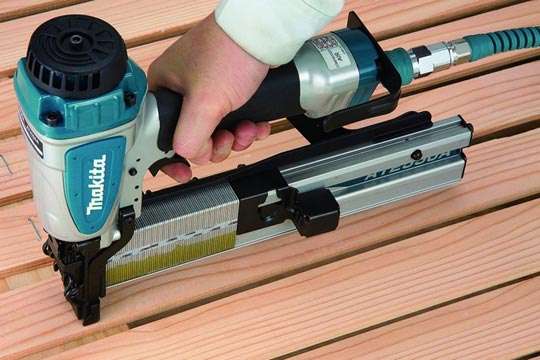
The cord must be long and well insulated
The rate of fire of some electric models is poor.
Therefore, it is also recommended to pay attention to this indicator. On average, the stapler should be able to fire about 30 rounds per minute.
In rechargeable devices, important characteristics are the capacity of the battery, the time it takes to recharge. Convenient if the kit includes a second replaceable unit.
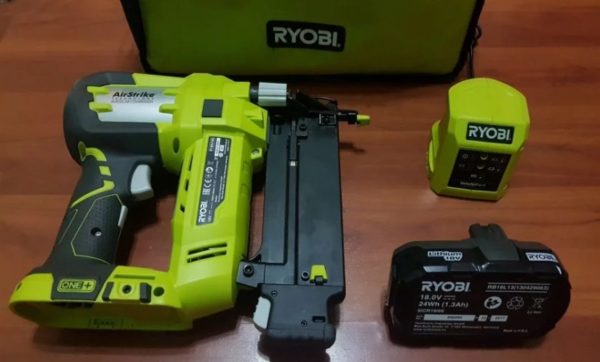
A spare battery for a construction stapler can come in handy for a large amount of work
Most household staple guns are made of plastic. Due to this, they are lightweight and not subject to corrosive processes. However, the most reliable and durable tool should be made of metal.
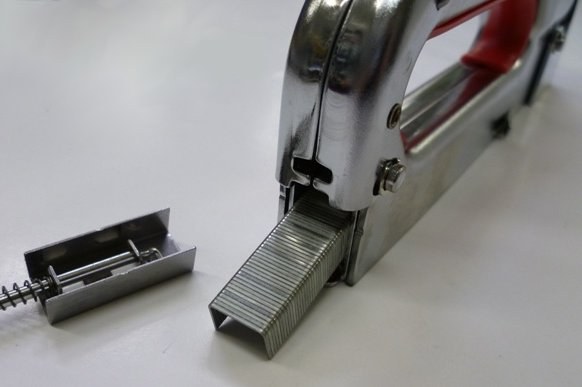
Stapler with metal body
Based on the above recommendations, it is not difficult to get the right model of the stapler.
About the water resistance classes of the glue
In Europe, every construction and other product has its own definitions. As for the glue, it also has designations. Most often, when talking about this, they mention the water resistance classes of the glue according to the DIN EN 204 standard, which has successfully taken root in Russia.
Let's briefly describe each of these classes.
- D1. Lowest water resistance class. Adhesives of this class can be used in a room where the temperature is less than 50 degrees Celsius. In this case, the moisture content of the tree should be no more than fifteen percent. Short-term exposure to water is allowed.
- D2. Slightly higher class. It can be used in the same premises, but the permissible moisture content of the wood material is slightly higher - up to eighteen percent. Short-term exposure to water is allowed.
- D3. Quite a popular class of glue. It can be used not only inside a house or apartment, but also outdoors. Short exposure to water is acceptable. However, the D3 class adhesives themselves can be used with damp wood materials.
- D4. Like the D3, the D4 is suitable for both indoor and outdoor use. Withstands exposure to water, but it is still necessary to apply a protective coating to protect the adhesive.
Each class of water resistance has its own characteristics
How to make at home
Adhesive for PVC edgebands is prepared on their own at home. For this purpose it is necessary:
- Cut the linoleum pieces into small pieces.
- Place them in a glass or metal container that is tightly closed.
- Add acetone in a volume twice as large as the first ingredient.
- Close container tightly.
- Put in a dark place for 12-15 hours.
- After dissolving the linoleum, the glue can be used.
The melamine edging or edging with glue on the back is glued using ordinary tools, for this you need:
- Measure the required length of the melamine edging, taking into account the trimming allowance.
- Apply tape, align along one edge and iron with an iron, gradually moving 10-20 cm.
- Roll the ironed areas with a roller.
- Rub the heated areas with felt.
- Withstand the temperature regime of heating the iron.
- After cooling, cut the edge, clean the edges and corners.
Use a cotton cloth or fluoropolymer iron pad to maintain the correct temperature. Instead, it is more convenient to use a construction hair dryer. If a defect was allowed during the performance of the work, the edge is reheated, removed and all actions are repeated.
In the absence of glue on the back of the tape, proceed as planned:
- Moment glue is applied.
- Distribute over the entire surface.
- Wait 10-15 minutes.
- Press the surfaces to be glued tightly.
- The bar is wrapped in felt and pressed tightly against the finish.
- After the glue has dried, proceed to the processing of the edges.
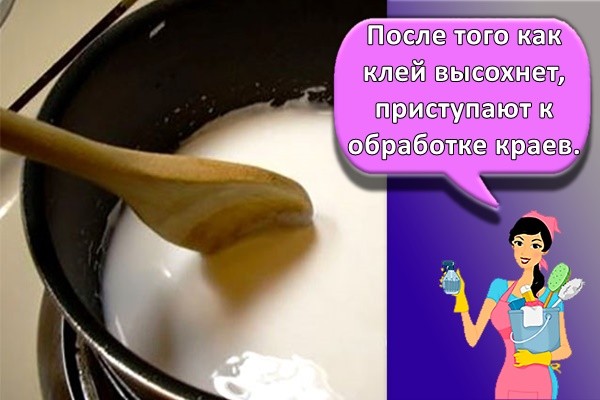
Types of furniture edges
One of the most popular materials for making furniture is laminated chipboard. Its disadvantage is the ugly edges that remain when the part is cut. These edges are masked by the furniture edge. They make it from different materials, respectively, it has different properties and prices.
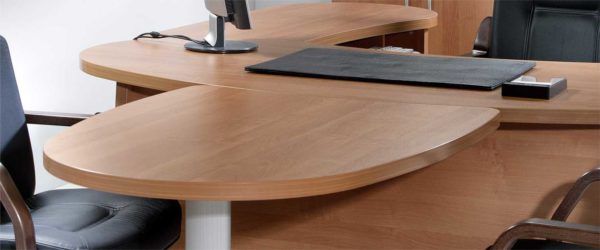
You can also get such an edge yourself.
Edges paper or melamine
The cheapest option is melamine-impregnated paper edging. The paper is taken with a higher density, impregnated with melamine to increase strength and glued onto papyrus paper. Papyrus can be single-layered (cheaper) and double-layered. To prevent the melamine coating from being erased, everything is covered with a layer of varnish. To make it more convenient to trim the parts, an adhesive is applied to the reverse side of the melamine furniture edge. When working, you only need to slightly warm this composition and press it well to the end.
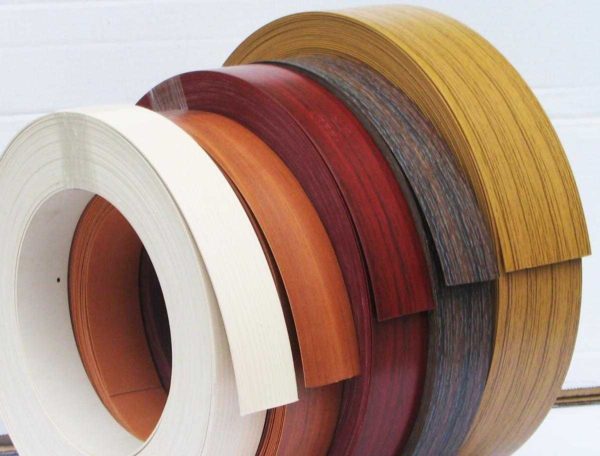
Paper or melamine edging is the cheapest, but also the most short-lived option for finishing furniture ends.
The thickness of paper edging tapes is small - 0.2 mm and 0.4 mm are the most common. There is no thicker sense to do, and it will be expensive.
This type of edge differs in that it bends very well, does not break when bent. But its mechanical strength is very low - the edge wears out quickly. Therefore, if it is used, then only on those surfaces that are not subjected to stress. For example, on the back of shelves, countertops, etc.
PVC
Polyvinyl chloride, which has recently become widespread, is also used in the production of furniture edgebands. From the mass dyed in a certain color, a tape of a certain width and thickness is formed. Its front surface can be smooth, monochromatic, or it can be textured - with imitation of wood fibers. The number of colors is large, so it's easy to find the right one.
PVC furniture edging is the most popular material used by both DIYers and professionals. This is due to the relatively low price and good performance properties:
- High mechanical resistance.
- Withstands exposure to chemicals (household chemicals, for example).
- Moisture-proof material protects the ends of the product from moisture.
- PVC is an elastic material that allows processing curved surfaces.
-
It is well processed with simple tools, which allows you to get a good result even at home.
PVC furniture edge is available in different thicknesses and widths. Thickness - from 0.4 mm to 4 mm, width from 19 mm to 54 mm. The thickness is chosen depending on the expected mechanical load or appearance, and the width is slightly larger (at least 2-3 mm) than the thickness of the workpiece. There is a PVC furniture edge with an applied adhesive, there is - without.Both can be glued at home (more on that below).
This type of edging material has its drawbacks: not very wide temperature range: from -5 ° C to + 45 ° C. For this reason, furniture on the street in winter cannot be left, and also when pasting with heating, one must be careful not to melt the polymer.
ABS (ABS) plastic
This polymer does not contain heavy metals and is highly durable and durable. The disadvantage can be considered a high price, therefore it is used extremely rarely, although it has excellent properties:
- Resistant to high and low temperatures, therefore, when gluing, you can use glue with any melting point. Small shrinkage on heating - about 0.3%.
-
High mechanical resistance.
This type of edging can be matte, glossy, semi-glossy. There are also options that mimic different types of wood. In general, this material is more convenient to work with and more durable in use.
Veneer edging
Veneer is a thin cut of wood, dyed and shaped like a ribbon. This furniture edge is used in production for pasting veneer sections. Working with this material requires certain skills, and the material is expensive.

Veneer is not the most popular material for edging
Acrylic edging or 3D
Made from clear acrylic. A drawing is applied on the reverse side of the strip. The polymer layer on top gives it bulk, which is why it is called a 3D edge. It is used in the manufacture of furniture in an unusual design.
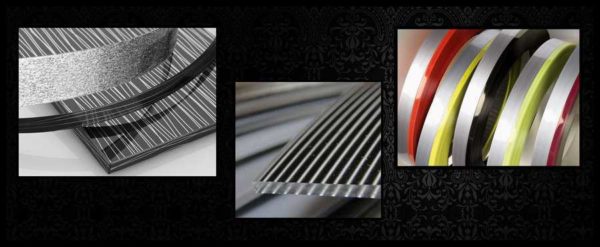
Acrylic gives the picture three-dimensionality
Properties of furniture glue
Adhesives for furniture ensure bond strength, their composition is optimal. Weights correspond to the following parameters:
- Resistant to temperature changes. Furniture structures are often used outdoors, they stand near batteries or kitchen stoves, ovens, the glue is able to withstand temperature extremes, while maintaining its original properties.
- Withstand heavy loads. This applies to bookshelves, chairs, sofa seats, etc. Such structures are constantly under pressure, but high-quality adhesives cope with it.
- Vibration resistance. Furniture is often installed near washing machines and various equipment. In order for the connection to be strong, the fact of stability is taken into account.
- Resistance to chemical elements. Furniture items undergo constant cleaning, they are often exposed to chemical attack.
Technical data are considered using the example of a thermoplastic adhesive composition:
- The composition includes resins, rosin, synthetic rubber. Some brands contain solvents, they are added to reduce the setting time, drying.
- The working temperature is within 120-200 degrees.
- Hardening occurs 40 seconds after application.
For a strong connection, fixation is made before the initial setting.
How to choose the best furniture glue: rating
To choose the right glue for furniture, you first need to know the specifics of the work, the characteristics of the glue mass:
- Surface type. The instruction contains information about the materials that are suitable for this gluing. In the absence of information, according to the name of the raw material, information is studied on the Internet.
- Basis type. Some brands bond firmly, but spoil the surface. To prevent this from happening, a synthetic elastomer is purchased. They do not cause rejection.
- Storage periods. An expired product loses its original properties and can spoil the surface.
- Harmful components. When working with chipboard, it is advisable to avoid buying materials containing toxic compounds, solvents. These substances lead to deterioration of elements, can harm health.
- Consistency. It is optimal to work with medium consistency products. Liquid masses are quickly absorbed, preventing the elements from grabbing.And thick ones must be quickly distributed and then they dry for a long time.
- Colour. To make the seam invisible, you need to buy furniture glue of a certain shade. If this is difficult to do, then it is better to buy a transparent base.
- Joiner PVA TM Moment. Refers to universal formulations. The base is water-dispersible, it well connects plywood, chipboard, etc. for greater adhesion, after applying the mass, fixation is required for 20 minutes. The product does not affect the tone of the coating. The work is carried out at a temperature of 5-30 degrees. Negative sides: low resistance to moisture, it is unacceptable to carry out work at low temperatures.
- Titebond. Designed for joining wooden structures. The glue itself is used in the production of floor coverings, plywood. There are polymer, polyurethane, protein bases. The substance is moisture resistant, frost resistant. Provides increased adhesion, does not need long fixation, resists solvents, excess is easily removed before polymerization.
- Clayberite 303.0 and 501.0. The first option is waterproof, glues all types of wood. After drying, the compound has a white tint. It is allowed to operate at temperatures up to -30 degrees. The second option is polyurethane, moisture and heat resistant. Able to connect wooden surfaces and wood with tiles, ceramic, concrete base. It is used for products used inside and outside the building. Minus - it is difficult to remove from the skin, therefore work is carried out in means of IZ, the room must be constantly ventilated until it dries completely.
Varieties
The material seems to be of the same type only at first glance. In reality, the types of furniture differ in composition and quality. The classification of laminated chipboard includes the following technical characteristics:
- the amount and type of impurities;
- construction;
- processing level;
- the condition of the outer layer;
- grade;
- brand.
Chipboard has the following types of construction:
- single layer;
- multilayer;
- three-layer.
Resistance to high humidity, deformation, strength are the criteria for dividing into grades:
- P-A;
- P-B.
They are different in facing:
- veneered;
- coated with sulphite and finishing paper;
- laminated;
- not having a decorative coating;
- rough, used for ancillary work and interior partitions of furniture.
In the classification of the upper layer, the following types are distinguished:
- ordinary;
- coarse-grained;
- with a fine structure.
Products have quality characteristics and are divided into varieties:
- the first grade includes material made from selected wood chip material of one species. Their surface is perfectly smooth. There are no scratches or chips on it. The material is covered with veneer or laminate on both sides;
- for the second grade, small surface defects (scratches and chips) are permissible;
- slabs of the third grade have significant imperfections on the surface. They are used for auxiliary work.
Chipboard slabs are divided according to the degree of resistance to aggressive environmental influences:
- the product is resistant to moisture, since during the production process it is subjected to a special treatment with a paraffin emulsion. Wood fibers are impregnated with a special compound that prevents swelling of the material from increased moisture;
- the material contains flame retardants that prevent it from burning.
Many people, far from the production of furniture, do not distinguish between wood-based panels (fiberboard, chipboard, MDF). Therefore, the question of which furniture is better from mdf or wood chipboard is one of the most frequently asked questions. The difference exists, but to the untrained eye it is not significant.
What is the difference between wood chipboard and MDF? In comparison, it looks like this:
- as for laminated chipboard, wood waste is used for MDF, but of a smaller size;
- instead of formaldehyde resins, paraffin is added to bind the wood material, which gives the finished board such properties as:
- flexibility;
- density;
- environmental friendliness.
When deciding what is better than MDF or wood chipboard for furniture, you need to take into account the technical characteristics of materials, their scope. MDF board:
- smoother than chipboard;
- it has the property of deformation, which is used for the manufacture of bent forms;
- paraffin impregnation creates a water-repellent property;
- MDF is used for facades.
Fiberboard performs certain tasks. A plate is made from shavings, chips, wood dust by pressing. For adhesion of the material, synthetic resins, rosin, paraffin are added and covered with a laminate. Its thickness reaches about 4 mm. Fiberboard is used for the backs of furniture.
Which of the materials is ldf or mdf better? Chipboard is universal. It matches all furniture materials. If the products are properly operated and properly care for the furniture made of chipboard, it will last a long time.
How to care for your furniture to increase its lifespan:
- it should not be allowed that a laminated chipboard furniture shelf is loaded over 10-15 kg. This will cause them to deform;
- the use of active detergents is unacceptable, as they can cause significant damage to the protective layer;
- it is enough to wipe the furniture with a damp cloth during cleaning.
When assembling furniture with laminated chipboard, the material is the support of the structures. The following is considered a classic option in furniture production:
- facade made of MDF;
- from fiberboard - back wall;
- furniture case from laminated chipboard.
It is difficult to judge which material is better when applied in practice, since each of the materials performs its own functions. In the design of furniture, this is the order of assembly that is adopted and interchangeability is not practiced here.
If the furniture begins to lose its appearance or needs restoration, it is easy to restore furniture from chipboard with your own hands, armed with tools for toning, varnishing, and decorating the facade. As the main materials for restoration you will need: paints, varnish, sandpaper, film, wallpaper, fabric and skillful hands.

